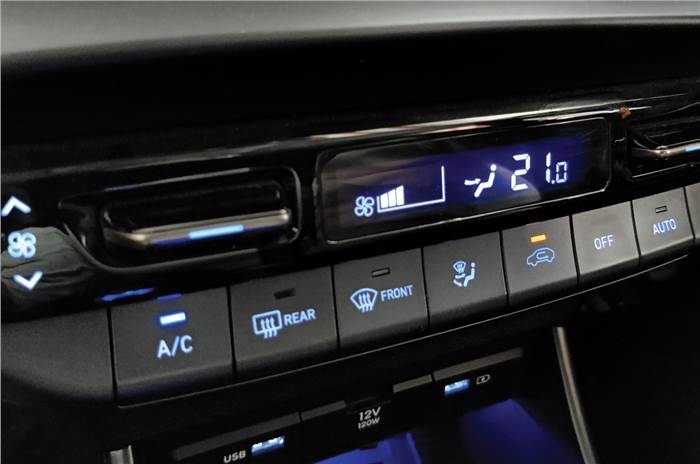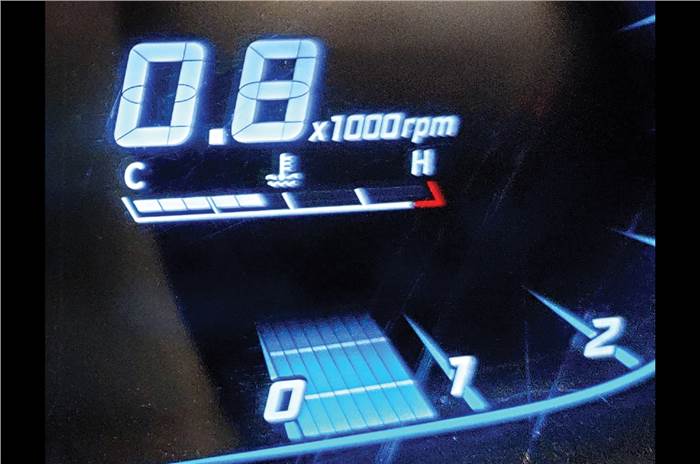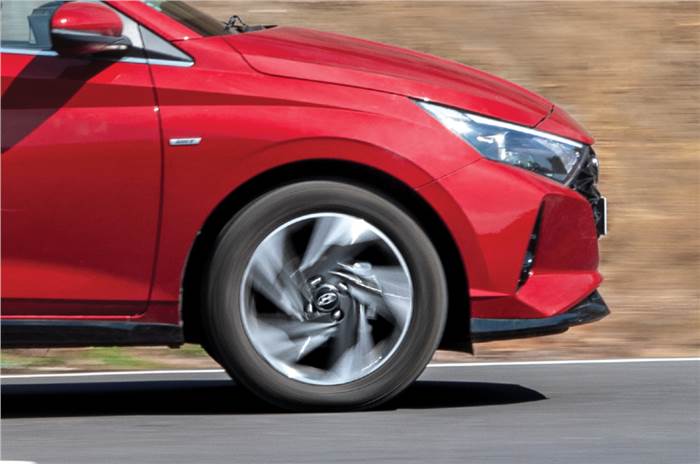Hyundai i20 Turbo iMT long term review, 20,000km report
Fourth report: iMT proponent Nikhil finds himself sold on another i20 that takes a different approach to two-pedal ease.
Published on Apr 17, 2022 10:00:00 AM
51,449 Views
Follow us on

Worsening traffic has impacted economy. Single-digit figures have become common.

BOSE MODE: There’s a nice depth to the sound from the Bose sound system.
Pictured here is me torn between two Hyundai i20s. The one on the left is an i20 Turbo iMT that’s been ‘my’ car for the better part of a year. The one on the right is the i20 CVT (iVT in Hyundai speak). If you’ve read my past reports on the i20 iMT, you’d know I’m a fan of the car and its gearbox. For the uninitiated, an iMT or intelligent manual transmission, features a two-pedal arrangement like a full automatic and does the job of clutch modulation for you. All the driver has to do is change gears as in a conventional manual gearbox-equipped car. It’s a clever set-up that’s easy to get used to and one that works surprisingly well to reduce stress in city driving. I’ve batted for iMTs since my time with one and believe the tech has great potential as a halfway house between a manual and a full automatic. It’s just that my case for the i20 with the iMT weakened dramatically when the i20 CVT rolled into office.

Over the two days it was with us, the i20 CVT surprised me and all who drove it by just how good it is as a city car. Yes, the i20 CVT makes do with a less powerful 1.2 naturally aspirated, four-cylinder petrol engine that puts out 88hp and 115Nm (to the three-cylinder 1.0 Turbo’s 120hp/172Nm), but in the cut and thrust of city traffic, I really didn’t feel any performance deficit. There’s easy access to power and none of the low-speed hesitation that I’d become accustomed to in the Turbo either. The CVT itself is smooth and offers a very polished experience. And, importantly, asks even less from the driver than an iMT. The CVTs are pricier than comparable iMTs by about Rs 20,000, but are well worth the premium. In fact, I’d go as far as saying the CVT is the pick of the i20 range, Turbo DCT versions included.

As for life with the i20 iMT, it’s been an uneventful few months. Messy road construction work on my route to office has slowed moving speeds and increased idling time, and this has resulted in a drop in efficiency. The real-time numbers displayed on the MID hover in the 8.8-9.5kpl band and that’s a bit worrying with petrol prices rising the way they are. On the flipside, more time spent in the car has meant greater appreciation for the i20’s Bose sound system that adds life (and some bass) to my commutes. And the slick 10.25-inch touchscreen remains my benchmark to judge other systems by. A word on the i20 air-conditioner too – it’s quick to cool the cabin and has put up a valiant fight through March’s heat wave.
| Hyundai i20 Price, Mileage, Specifications, Features and Variants | |
|---|---|
| Brand | Hyundai |
| Model Name | i20 |
| Hyundai i20 Price | ₹ 8.01 - 14.44 lakh |
| Hyundai i20 Range/Mileage | Petrol : 16 - 20kpl |
| Hyundai i20 Specifications | Hatchback | 5 doors | 5 seats View All Specs |
| Hyundai i20 Features | LED headlight | 10.25-inch Touchscreen display | 6 airbags View All Features |
| Hyundai i20 Variants | 1.2 Petrol Era MT | 1.2 Petrol Magna MT | 1.2 Petrol Sportz MT View All Variants |

The inconsistent tyre pressure reading issue I’d written about in previous reports seems to have resolved on its own, though the softened suspension will need to be checked during the 20,000km periodic service due soon. I’m still to take that long trip out of town in the i20 iMT, which is when I’ll perhaps have greater use for its added power. Till then, it’s the i20 CVT I’d be thinking of.
Also see:
Hyundai i20 Turbo iMT long term review, 7,000km report
| Fact File | Petrol |
|---|---|
| Distance covered | 19,775km |
| Price when new | Rs 9.99 lakh (ex-showroom, Mumbai) |
| Test economy | 9.5kpl (city) |
| Maintenance costs | None |
| Faults | None |
| Previous Report | December 2021, July 2021, March 2021 |
Copyright (c) Autocar India. All rights reserved.







Comments
Member Login
Personal Details
No comments yet. Be the first to comment.